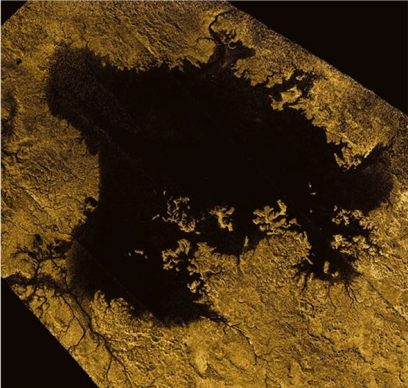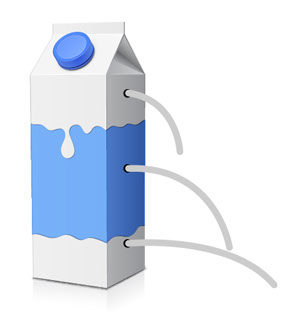-
WHAT IS NASA PHYSICS?
-
MODULES
-
Forces and Motion
-
Conservation of Momentum & Energy
-
Temperature and Heat
-
Fluids
-
Optics
-
Electromagnetic Spectrum
-
Modern Physics
-
Anticipation Guide 7
-
Intro to Modern Physics
-
Blackbody Radiation
-
The Ultraviolet Catastrophe
-
The Photoelectric Effect
-
Bohr's Atom
-
Spectra
-
Radioactive Decay
-
Special Relativity (SR)
-
Simultaneity
-
Distance and Time
-
General Relativity
-
May the Forces be with You
-
Modern Physics Notebook
-
Assessment Problems 7
-
-
Useful Things
-
-
SITE MAP
Fluids: Liquids and Gases
Pressure in Liquids
Solve This! - An Extraterrestrial Problem

Radar mosaic of Legia Mare on Titan, about 350 x 420 km wide. NASA.
The P = ρgh equation means that pressure depends on depth within a liquid-filled container. So if the pressure at 10 m depth in a terrestrial lake is 9.8 x 104 Pascals, for 20 meters depth it is twice as much (19.6 x 104 Pa), and for 100 m is 10 times more (9.8 x 105 Pa).
 The increase in pressure with depth is dramatically illustrated by punching small holes at different depths in a tall, empty milk carton. When filled with water, the liquid coming out the bottom hole squirts further than water from higher holes because the pressure is greatest at the bottom.
The increase in pressure with depth is dramatically illustrated by punching small holes at different depths in a tall, empty milk carton. When filled with water, the liquid coming out the bottom hole squirts further than water from higher holes because the pressure is greatest at the bottom.
Image: modified from © vectorlib.com - Fotolia.com
Answer: 5,684 Pascals
P = ρgh = 421 kg/m3 * 1.35 m/s2 * 10 m
P = 5,684 Pa
Answer: 6%
PT/PE = 5684/98000 = 0.06
The pressure at the bottom of the Titan lake is only 6% as much as for the Earth lake.
© 2013 by Wheeling Jesuit University/Center for Educational Technologies®. 316 Washington Ave., Wheeling, WV 26003-6243. All rights reserved. Privacy Policy and Terms of Use.

